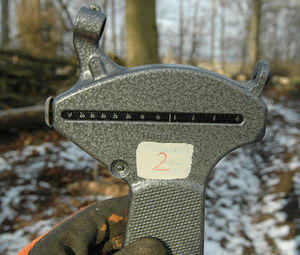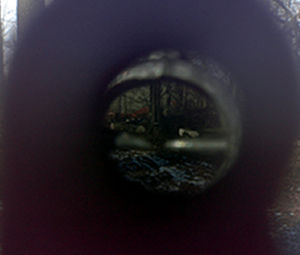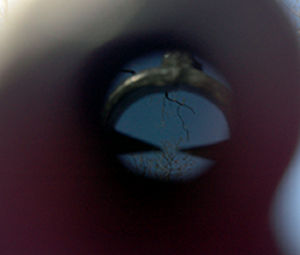Haga
| Line 20: | Line 20: | ||
The difference between the measurements will be tree height – | The difference between the measurements will be tree height – | ||
:<math> {h_t} = {h_c} - {h_b} </math>. | :<math> {h_t} = {h_c} - {h_b} </math>. | ||
| + | |||
{| class="wikitable" | {| class="wikitable" | ||
!Advantages | !Advantages | ||
Revision as of 11:11, 12 June 2012
| sorry: |
This section is still under construction! This article was last modified on 06/12/2012. If you have comments please use the Discussion page or contribute to the article! |
General description
Haga is a device to measure tree heights within distances of 15, 20, 25 and 30m to the tree by the trigonometric principle.The distance to three can optically be determined. Additionally there is a scale for slope measurements in % implemented. Therefore a levelling board is available.
Handling
The handling of the Haga is similar to the Blume Leiss. A button enables the actor to lock the needle where the measurement value can be read. <gallery
.Remember the value and measure the crown.
The difference between the measurements will be tree height – \[ {h_t} = {h_c} - {h_b} \].
The difference between the measurements will be tree height –
\[ {h_t} = {h_c} - {h_b} \].
| Advantages | Disadvantages |
|---|---|
| - measured values need to be remembered, because no second needle implemented | |
| optical distance measurement | fixed distances to the tree (could be difficult in closed forest stands) |
| independence of power sources (no batteries needed) | no zooming for the sight field available, in dark forest stand optical measurement is difficult, no digital storage of measurement results available. |
[[Category:]]



